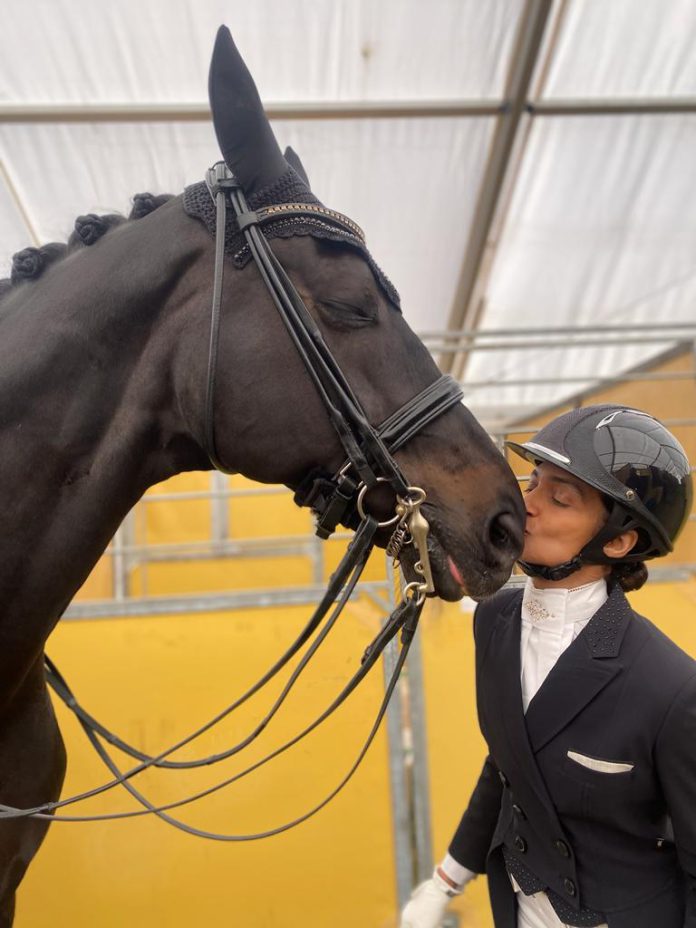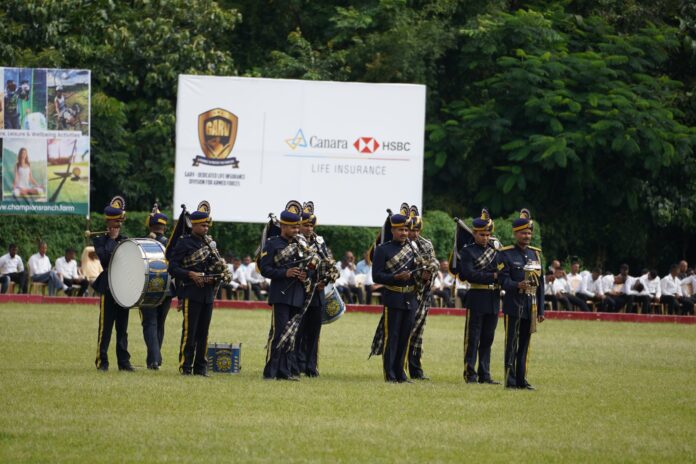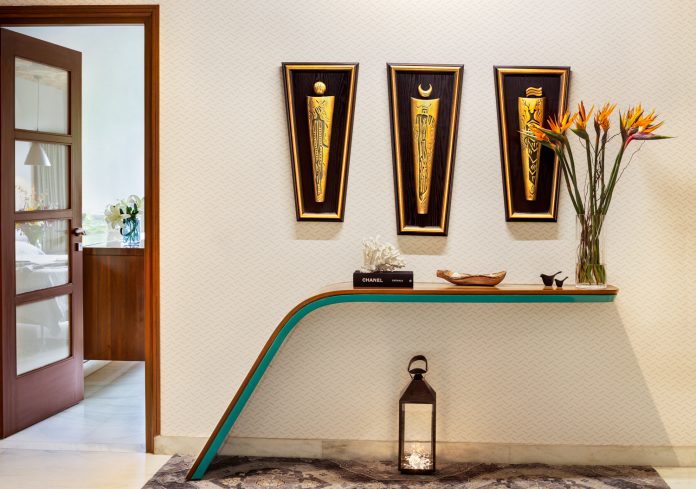In Herning, Denmark from August 6-14, the crowd at the Stutteri Ask Stadium roared as the dressage championships rolled around. Two familiar names atop saddles etched with the bright tricolour flag of India left everyone astonished by being the first Indians to compete in the Federation of International Equestrian’s World Championships under the individual dressage rider category. First, Shruti Vora, bounced back, after winning the second position at the Asian Games in 2019 by scoring an average of 64.534% with her horse Astride gaining the 33rd position at the quadrennial globally. She tells LA POLO: “It is a very proud moment for me personally and professionally wherein I could represent India and show the international community that we have what it takes to participate at the highest level of dressage.”

Shruti and her horses; Image Source – Shruti Vora
Although her incredible performance was commended by all judges, this was a battle for her. After a 14-year hiatus, she only returned to professional competitions a decade back and won the 8th position at the Asian Games in 2014 after four years of practice. The fitness level demanded a thorough practice. Taking up the highest level for dressage like any sport requires unforgivable dedication, determination, discipline and commitment to purpose. She further elucidates on her structured regime: “In this sport one is very dependent on the horse and the utmost compatibility and understanding between the rider and horse is essential. Hence, both on and off the horse (in the stables and post training sessions) one needs to be in complete sync. Typically in equestrian sports one needs at least 6-7 horses with the saddle in a day so that the human body perfects that art.” Fluid lines and seamless structure are requisites for higher scores in dressage.

Vora during her act; Image Source – Shruti Vora
Remarking that she was introduced to horses at the age of 3 in the Kolkata Race Course and encouraged by her family to take it up as a sport (considering the male domination at the time) is what she deems helps her stay on track. However, there is some work required within the Indian circuit to develop this into a full-fledged system. She opens up: “From India’s perspective, we need to have a more proactive and virile ecosystem that includes the National Federation and the governing bodies nurturing talent from a very young age and creating the requisite infrastructure for this talent to train and thrive. We also need to engage with the international bodies that have mastered the art in their respective countries and have made it a robust sporting industry to assist us in creating the same in India. Places like Denmark, Germany and England can be espoused in that regard for their systems.”

Anush Aggarwalla, the youngest participant and his horse; Image Source – Anush Aggarwalla
Another player, Anush Aggarwalla stole the spotlight as the youngest participant within this category and shared India’s historic participation with Shruti. “I’m really proud to be the one who achieved this feat. It’s a great feeling walking into a competition like this against the best equestrians around the world. I have been training in Germany for the past 5 years with my coach, Hubertus Schmidt. I feel humbled to even think that, in the smallest of ways, I have become linked to the glorious history of German Equestrian,” he tells LA POLO. He won the 28th position at the quadrennial competition and if he maintains the position, will qualify for the Grand Prix special where he could compete to achieve the title Individual Dressage World Champion. Achieved alongside his horse Sir Caramello OLD with an average of 66.832% he competed against Isabelle Herth of Germany who has the world record of winning 12 Olympic medals (7 gold and 5 silver) and being a six-time Olympian. At the same time the equestrian is being trained by Hubertus Schmidt who himself won an Olympic gold medallist (2004 Athens), team gold medallist at the 2006 World Championships and team gold and individual silver medalist at the 2006 European Championships.

“Somehow, my horses and I always found the courage to move forward together as a team,” Anush Aggarwalla; Image Source – Anush Aggarwalla
As luck would have it Aggarwalla also dove into dressage at the age of 3 in Kolkata, at the premier Tollygunge Club. By the age of 8 noticing his passion he was enrolled for riding lessons by his mother and soon began competing at local children’s events. “At 11, I started going to New Delhi to pursue my equestrian dreams. During the weekends, I would fly to New Delhi for my training and return by Sunday evening, so that I could still attend school during the week. I competed in a few national competitions at children’s level, winning a silver and a gold medal at the Delhi Horse Show in April, 2014. This continued till I was 16 after which I decided to move to Europe or the UK as that would be the only way I could compete at the highest levels. Although my family was supportive there were many rejections by coaches and then finally we came across Mr. Hubertus Schimdt. He very kindly responded, saying that I should come to Germany so that he could assess me personally. We took the opportunity and travelled to Germany a few weeks later to visit him. After giving me a few lessons, he agreed to take me on as a student,” he continues. Nonetheless the journey remained tough during these 5 years where he persevered through many disheartening failures and “last positions” but the calm nature, discipline and resolute attitude of horses helped him stay afloat. “Somehow, my horses and I always found the courage to move forward together as a team,” he says.

Overcoming difficulties in studies, culture shocks and language barriers Anush paved the way; Image Source – Anush Aggarwalla
For someone coming from a sheltered life, he found it difficult to juggle studies, the culture shocks and language barriers, yet he managed to do so through the support of his family, Mr and Mrs Schmidt and accepting the “discomfort zone”. To young equestrians looking up to him he says: “It is not easy for young aspirants, especially from India, to excel in equestrian sport, as there are not many opportunities to achieve this and one has to shift abroad. One has to be away from family and friends and adapt themselves to a completely new environment. Yet nothing is impossible and if you believe it, you can achieve it. Personally, I feel that the Indian equine industry has undergone promising positive changes such as the establishment of many equine academies but there is a need for long-term change. For instance, the adoption of European protocols and proper quarantine facilities will be helpful to free transportation of horses into and out of the country. The current quarantine period for horses entering India is 30 days minimum which is much more than other countries such as Germany, USA etc ( 1-3 days). Likewise an organized method to the whole infrastructure, including support for the competitions and veterinarian facilities would be required.” Even so, he explains all his experiences have been helpful in his journey. Quoting his coach, Schmidt, Anush states: “Pity is free, but envy must be earned.”

Hoisting the flag high, both dressage riders continued their journey while India celebrated its 75th Independence.

Divyakriti Singh Rathore making waves at CDI1*; Source – LL Foto
Recently at Ludwigsburg, Germany host to the CDI1* Grand Prix Championships from September 22-25, Divyakriti Singh Rathore marked a pivotal victory. Atop her Dancier mare Donna Wetter she became the first Indian individual dressage rider to achieve the qualifying score for the 2022 Asian Games. Known for her unbridled grasp of the polo pitch and dressage, the equestrian all-star did so with 66%.
With undisputed reverence for the motherland they all hope to see brighter days for equestrian sports in the country especially for young dressage aspirants and are paving the way, one milestone at a time.




